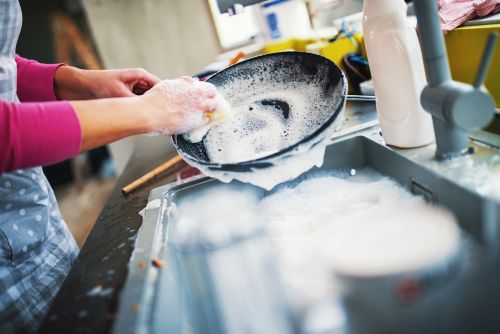Home and Meal Tips for Kids with Weak Immune Systems

Keeping a clean and safe environment is key to preventing infections.
For many years, I have worked with families and health care teams around the world to reduce infection risks for children with weak immune systems. In the hospital and at home, small changes in cleaning and food preparation can make a big difference in protecting children from germs and keeping them healthy.
The immune system detects and fights infections. Children who are in treatment for cancer and other life-threatening diseases often have weak immune systems. This makes them more likely to get infections. Creating a clean and safe environment is key to helping them recover and thrive.
Understand the risks
Germs are found everywhere—on surfaces, in the air, and even in food. These germs could be bacteria, mold (fungus), viruses, or parasites.
Molds live in dust, soil, and plants. As living germs, molds reproduce by making little “seeds” called spores. These spores can easily travel through the air and reach the airways in the lungs. Aspergillus is one kind of mold or fungus that can cause a serious infection in people with weak immune systems. The spore can sprout inside the body and cause a fungal infection.
Other types of germs called bacteria thrive in wet or damp areas, soil, or on plants or pots. Bacteria also can contaminate the food we eat.
A healthy immune system can usually handle these germs, but for children with weak immune systems, even small exposures can lead to life-threatening infections.
Treatments such as chemotherapy can weaken your child’s immune system. If your child’s immune system does not work well, certain germs can easily cause illness. Infections during this time often require strong medicines.
You can help prevent infections by providing the safest possible home environment for your child.
Reduce germs in your home
Here are ways to reduce germs and make your home safe:
Manage dust
- Reduce clutter to prevent dust from collecting.
- Clean surfaces often with a damp cloth to avoid spreading dust into the air.
- Change air filters regularly.
- Keep windows closed to limit spores.
Prevent dampness and exposure to plants
- Keep living areas dry in your home.
- Fix leaks or remove damp carpets.
- Avoid live plants or flowers indoors, as they can carry germs through the soil and water.
Prepare food safely
Another way to prevent germs from causing harm is to give your child safe food. This is food that is less likely to have germs. Follow these tips to help your child avoid getting sick from germs in food:
- Clean: Wash your hands, utensils, and surfaces often with hot water and soap before preparing food. Sanitize your kitchen cloth and sponges daily, either by microwave on high for 1 minute, or by placing in the dishwasher.
- Separate: Keep raw meat, poultry, seafood, and eggs away from ready-to-eat foods. Wash your hands after handling these items. If you need to wash raw meat, use a separate sink and avoid using your regular sink to wash kitchen dishes and utensils.
- Cook: Ensure that foods are cooked to safe temperatures:
- Beef, pork, lamb: 145°F (63°C)
- Ground meat: 160°F (71°C)
- Poultry: 165°F (74°C)
- Avoid raw or undercooked meat, seafood, or eggs.
- Chill: Refrigerate food promptly. Germs grow fastest between 40°–140°F (4°–60°C)
Taking these steps for cleaning and food safety will reduce your child’s risk of infections and provide a safe and healthy environment for their recovery.





